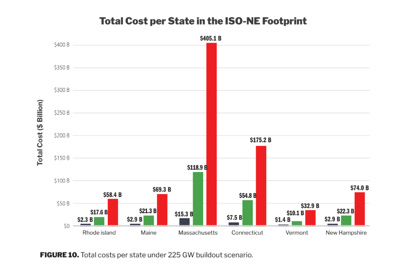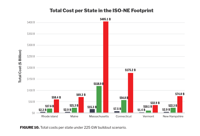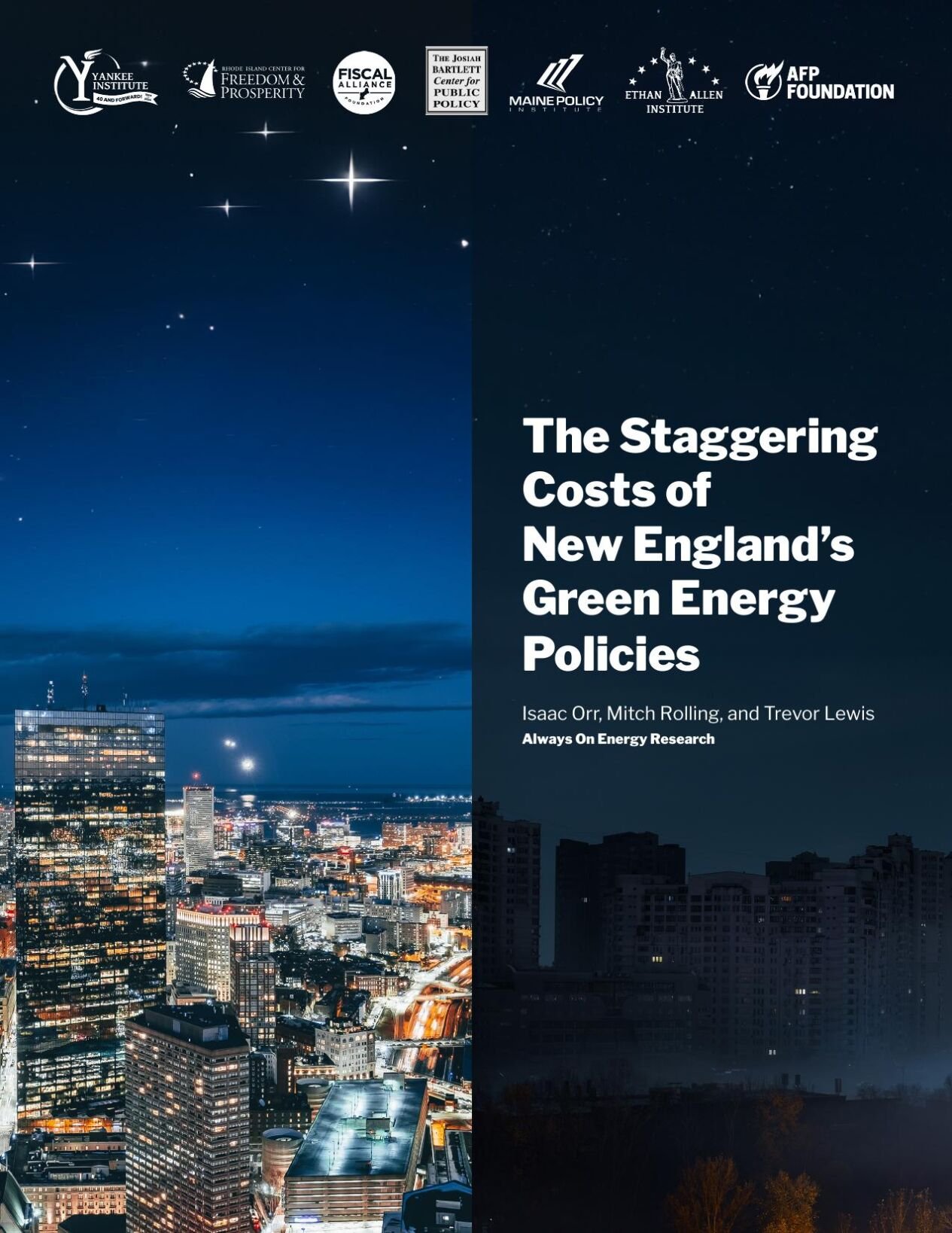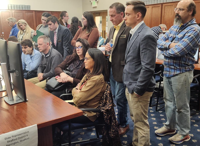The comprehensive mandates that solar, wind and battery power dominate the energy mix in all other New England states will raise electric rates in New Hampshire $74 billion by 2050, according to the report that a group of conservative free-market think tanks released Tuesday.
Across the rest of New England, the move to set an 80% target to reduce carbon-based emissions and expand the use of green renewables will raise all electric rates in the region by $815 billion in 26 years, costing the average residential customer $99 more annually, the report concluded.
The growing reliance on weather-dependent energy sources will also lead to more rolling blackouts during peak demand periods, the study warned.
Drew Cline, president of the Josiah Bartlett Center for Public Policy, said the report should be a warning for policymakers in the five other states.
The report concluded that New Hampshire’s lack of such mandates and its expanded reliance on natural gas to meet capacity needs will save regional ratepayers nearly $57 billion by 2050.
“New Hampshire stuck with natural gas and didn’t force this transition and that reduces the electricity demand,” Cline said. “There’s no question New Hampshire ratepayers will pay the price for these policies if other states fail to reverse course.”
But Sam Evans-Brown, executive director with Clean Energy NH, called the report “fundamentally flawed” because it more the doubles the forecasted need for renewables by 2050 compared with the analysis of ISO New England, the nonprofit firm that manages the regional electric grid.
“All of the eye-popping cost estimates stem from this inexplicable decision. I’m not a grid engineer, but I would ask myself, who is more likely to know how much energy we will need, the entity who is actually required to ensure the reliability of the grid (ISO) or a set of organizations with a documented history of opposing renewable energy?” Evans-Brown said.
Environmental advocates insist increasing use of renewables will make the region less, not more, prone to rolling blackouts in the future.
Always On Energy Research is the umbrella group that produced the report released by the Josiah Bartlett Center, the Americans for Prosperity Foundation and like-minded think tanks in Massachusetts, Vermont, Connecticut, Maine and Rhode Island.
Greg Moore, regional director with AFP, said New Hampshire exports more power than it uses and resistance of these green energy mandates have contributed to the state’s economic growth.
“We are paying the price for our neighbors’ bad habits,” Moore said during an online press conference where the report was released.
Ayotte opposes mandates
During the 2024 campaign for governor, both Democratic nominee Joyce Craig of Manchester and her primary opponent, Executive Councilor Cinde Warmington of Concord, criticized Gov. Chris Sununu for failing to support more renewable energy sources. They argued the state was losing out on job growth in the state-of-the-art field.
Republican Gov.-elect Kelly Ayotte of Nashua said during the campaign she would oppose the renewable-energy mandates, saying they would only lead to higher costs for ratepayers.
To deal with among the highest energy costs in the country, Ayotte said she would do more to seek an “all of the above” approach to increasing access to cheaper power for New Hampshire customers.
Though it’s years away from becoming a viable power producer in the U.S., Ayotte said New Hampshire should promote advanced, small nuclear energy technology and position itself to be the site of a future project.
A group of House and Senate Republicans have proposed legislation for 2025 to declare that development of small-nuclear technology is in the “best interest” of the state.
Other findings in the report were:
• Residential costs: The average annual bill for electricity in New England would go up from $2,107 presently to $4,610 by 2050;
• State-by-state load: Higher spending for electricity would go up by $405 billion in Massachusetts and $175 billion in Connecticut while New Hampshire would still see the third highest price spike in the region, $74 billion by 2050.
• Other sectors: commercial businesses electricity costs would go up $489 per year while manufacturing customers would have bills increase by an average of $5,280 annually;
• Renewable Demands: The study contends that even when wind and sunshine are plentiful, the region would need 225 gigawatts of renewables equal to 12,000 wind turbines and 129 million in solar panels.
ISO maintains the renewable energy need will only be 97 gigawatts.
The Acadia Center, a Boston-based environmental nonprofit think tank, said the report warns these mandates to renewables would cost $31 billion per year through 2050, yet in 2022 the six New England states spent $76 billion on energy under the status quo.
In its analysis, the Acadia Center maintained the cost of energy will increase into the next decade, but it then should drop for ratepayers over the following two decades.
Evans-Brown of Clean Energy NHsaid the report makes the point about the downside of imposing too-rigid mandates for specific energy sources.
“A policy framework that is technology-agnostic is likely to be more economically efficient, and so I think that’s a good takeaway from a report like this,” Evans-Brown said.
Yet the report ignores that renewables are affordable now especially with federal tax credits, he added.
“The reality is that clean energy is cheap now. Are variable wind and solar going to be sufficient to completely eliminate greenhouse gas emissions? Obviously not, but there’s no reason that we shouldn’t deploy more of them now,” Evans-Brown said. “Whenever they run, they save us the cost of expensive fossil fuels.”

















